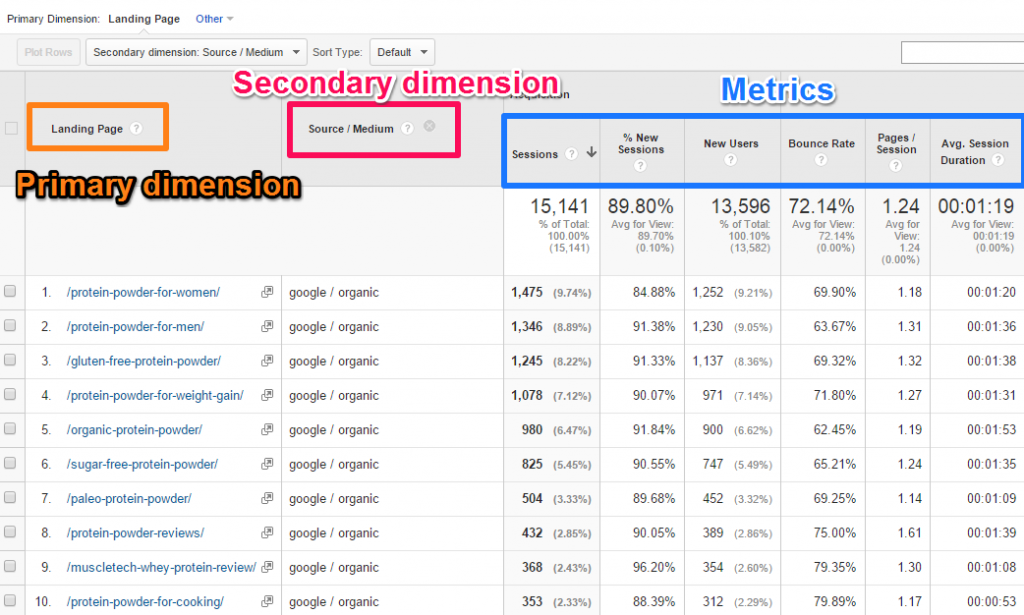Unlocking the Power of Second Dimension Analytics for Enhanced Data Insights and Decision-Making
In the realm of data analytics, main measurements frequently take the spotlight, yet the true depth of insights lies within the world of second measurements. These added data points provide a nuanced viewpoint that can brighten relationships and patterns not easily apparent at very first glimpse. By using the power of additional dimension analytics, organizations can introduce covert patterns, uncover relationships, and remove a lot more meaningful verdicts from their information. The potential for enhanced decision-making with the use of these additional measurements is large, promising a deeper understanding of intricate information collections and leading the way for more educated calculated selections.
Importance of Secondary Dimensions
Discovering the value of additional dimensions in analytics reveals the covert layers of data understandings crucial for informed decision-making in numerous domain names. Second measurements offer a much deeper understanding of main data by using extra context and viewpoints. By incorporating secondary measurements right into analytics, organizations can draw out a lot more nuanced and detailed understandings from their datasets.
One secret significance of secondary measurements is their capability to segment and categorize primary data, enabling a much more detailed evaluation of details parts within a dataset. When looking at the information as a whole, this division allows businesses to determine patterns, patterns, and outliers that might not be apparent. Second measurements help in revealing correlations and dependencies in between different variables, leading to more precise forecasting and predictive modeling - secondary dimension.
Moreover, additional dimensions play an important duty in enhancing information visualization and reporting. By including additional dimensions to visualizations, such as charts or charts, analysts can create much more informative and interesting representations of data, promoting better interaction of searchings for to stakeholders. On the whole, the integration of additional dimensions in analytics is instrumental in opening the full potential of information and driving evidence-based decision-making.
Secret Advantages of Utilizing Secondary Measurements
Making use of second dimensions in analytics provides organizations a tactical benefit by enhancing the deepness and granularity of data insights. By studying data utilizing secondary dimensions such as time, place, gadget kind, or user demographics, organizations can reveal patterns, patterns, and connections that may or else stay hidden.
Additionally, the use of secondary measurements improves the context in which primary data is interpreted. By leveraging second measurements in analytics, organizations can harness the complete capacity of their data to drive far better decision-making and accomplish their business purposes.
Advanced Information Evaluation Strategies
A deep study innovative data analysis methods exposes innovative techniques for extracting important insights from complex datasets. One such technique is machine understanding, where formulas are employed to identify patterns within information, predict end results, and make data-driven choices. This approach enables the automation of analytical model building, enabling the handling of huge quantities of information at a much faster speed than conventional Visit Your URL methods.
An additional innovative method is anticipating analytics, which makes use of analytical formulas and equipment discovering methods to anticipate future outcomes based upon historical information. By examining patterns and fads, companies can anticipate consumer behavior, market fads, and prospective risks, equipping them to make positive choices.
Moreover, text mining and sentiment evaluation are beneficial methods for extracting understandings from unstructured information sources such as social media comments, consumer reviews, and survey responses. By examining text data, companies can recognize customer opinions, determine emerging patterns, and enhance their services or products based upon comments.
Enhancing Decision-Making With Additional Measurements

Enhancing decision-making with secondary measurements enables services to make more informed and targeted critical look at this web-site options. By segmenting consumer information based on secondary measurements like buying history or interaction degrees, firms can customize their marketing techniques to certain target market segments, leading to improved conversion prices and customer fulfillment. Second measurements can help determine relationships and connections between different variables, making it possible for organizations to make data-driven choices that drive growth and earnings.
Carrying Out Secondary Dimension Analytics
When incorporating second dimensions in analytics, companies can unlock much deeper insights that drive strategic decision-making and improve overall efficiency. This entails recognizing the specific concerns the organization looks for to respond to and the information factors needed to address them.

Additionally, companies ought to take advantage of advanced analytics devices and innovations to enhance the procedure of incorporating secondary measurements. These tools can automate data handling, analysis, and visualization, allowing organizations to focus on translating insights as opposed to manual data control.
Conclusion
In verdict, additional measurement analytics play a crucial role in improving data insights and decision-making procedures. By utilizing advanced data analysis techniques and executing additional dimensions properly, organizations can open the power of their information to drive calculated company choices.
In the world of data analytics, key dimensions frequently take the spotlight, yet the real depth of insights exists within the realm of second dimensions.Utilizing additional dimensions in analytics offers organizations a critical advantage by augmenting the depth and granularity of data understandings. By leveraging additional dimensions in analytics, companies can harness the complete potential of their data to drive far better decision-making and attain their organization goals.
Executing data recognition procedures and regular audits can assist maintain information top quality and integrity.
By utilizing innovative data evaluation strategies and executing secondary measurements properly, organizations can open the power of their information to drive critical service decisions.